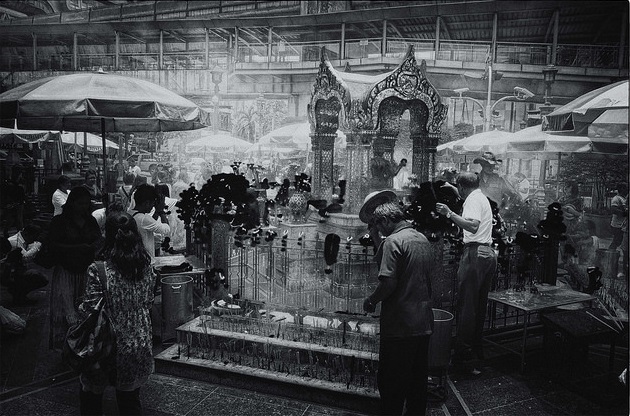Almost a week after a powerful explosive device packed with ball bearings ripped through a throng of tourists and commuters at Bangkok’s famous Erawan Shrine killing twenty people, there’s still no clear idea of who planned and carried out one of the most serious terrorist attacks in Southeast Asia since the 2002 Bali bombings.
In the absence of a claim of responsibility—which is a common attribute of attacks by international jihadist groups—fingers are being pointed at an internal source and the government has publicly said it rules out international terrorist involvement.
Top of the list on the domestic front would be the Malay Muslim armed group battling Thai security forces in the Deep South of the country, but government sources say the armed movement has denied its involvement. Moreover the type of bomb used, high explosives packed with ball bearings, has simply never appeared in the South.
The main armed group, The National Revolutionary Front or BRN, has waged a lethal insurgency that involves almost daily bombings and shootings, but has rarely taken its attacks outside the three provinces. A car bomb that exploded in a hotel car park on the holiday island of Ko Samui earlier this year appeared to break the mould; it was deliberately designed to send a warning rather than kill large numbers of people—even though a young Italian teenager was slightly wounded.
In Thailand’s deeply polarised political environment it was understandable that the first instinct was to link the attacks to domestic political differences. Thailand’s colour-coded politics has a track record of using small explosive devices to intimidate but rarely hurt supporters of one or other side. The violence escalated in the wake of the 2010 protests by supporters of ousted Prime Minister Thaksin Shinawatra that paralysed Bangkok.
However, launching an attack on this scale and at a site of such ritual significance for Thai culture would require a cold and calculated decision to kill, and a deep reservoir of hatred. Anyone who has visited Bangkok has passed this spot, marvelling at the incessant ritual offering to the gold-encrusted four-faced effigy of the Lord Brahma around which the shrine is built, or walking to one of the many shopping malls in the area. In many ways, this marks the heart of the city.
It’s not the first attack on the shrine itself; in 2006 a Thai man hacked off the head of the Lord Brahma statue, and he himself was attacked and killed. At the time, opponents of Thaksin Shinawatra suggested he was behind the attack. Police said the assailant was mentally unstable.
So could this have been the work of disgruntled Thais anxious to de-stabilise the government? Is it possible that the armed insurgent movement in southern Thailand has lost control of some elements who have gone rogue and decided to bring the campaign of violence to Bangkok without the knowledge of the leadership? In the absence of a claim of responsibility or decisive forensic evidence, the speculation in official circles is focused on these two areas.
It doesn’t help that in the polarised political context there are conflicts between security agencies and a high level of distrust. The army, which dominates the government, views the police, who lead the investigation, suspiciously. Nor does it help when, as is often the case in Thailand, every scrap of evidence or lead is aired publicly. There’s a real danger that internal bickering over establishing who was responsible, will hold up establishing the truth.
The worst imaginable scenario would be that an external jihadist group, comprised of Southeast Asians, linked up with sympathetic elements in Thailand, possibly Muslim Malays from the Deep South, to plan and execute a spectacular terrorist attack. In addition to the grievance nursed by Muslims across the region about the situation in the South there might also have been an urge to hit back at Thailand after the government decided in June to deport more than 100 Uighur refugees to China and almost certain imprisonment or worse.
The possibility of a joint venture along these lines, suggests that fears of fighters returning from the desert battlefields of Syria and Iraq may not be misplaced. In the post 2001 era, Thailand was a useful haven for extremists; in 2003 Thai authorities coordinating with the CIA captured Hambali, one of the most wanted members of Jemaah Islamiyah, in the central province of Ayudhya.
For the time being, the attack on the Erawan Shrine, and the harmless detonation of a similar bomb in the Sathorn area the following day, has everyone who follows violent extremism in the region scratching their heads. Why has such a sophisticated attack gone unclaimed? Could it be the start of a campaign? Disturbing in this respect is how fast the city has resumed its normal free and easy atmosphere; travelling across the city all week there has been no real evidence of extra security measures— or even the apparent desire for any.


